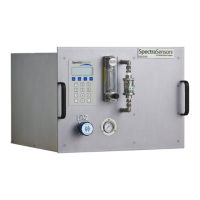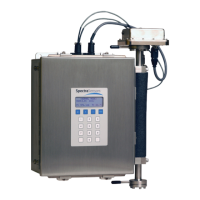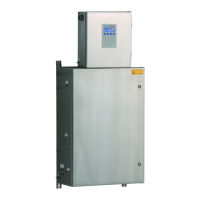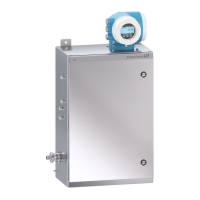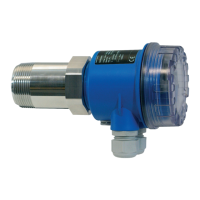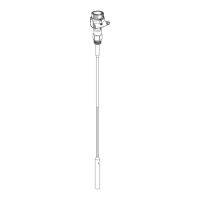SS2100i-1 Gas Analyzer
3–16 4900002224 rev. E 12-18-20
Connecting the Signals and Alarms
The 4-20 mA AI, 4-20 mA AO, serial and Ethernet outputs are connected to
terminal block (X4), as shown in Figure 3–6 on page 3–14. In addition, seven
digital inputs/outputs connected to SPDT relays through terminal block (X3)
are also provided.
The relays for the alarms are configured to be fail-safe (or normally energized)
so the dry contacts will open in the event of power loss. Thus, the alarms are
wired to be normally closed (NC) when the analyzer is running.
Consult the wiring diagrams in Appendix D. All work should be performed by
personnel qualified in electrical installation.
Toconnectthesignalandalarmcables
1. Open the enclosure cover according to the procedure under “To
open the analyzer enclosure cover” on page 3-3 to gain access
to the field interface terminal block.
2. Install compound barrier seal glands into the three M25 access ports
on the bottom right of the enclosure. Refer to “Application of
gland lubricant” on page 3-15.
3. Pull the cables for the alarm outputs and validation request input
through the first (from left) gland, the cables for the 4-20 mA AI and
4-20 mA AO through the second gland and the cable for serial or
Ethernet communication through the third gland and into the
enclosure.
The 4-20 mA current loop output is factory set to source current.
To change the 4-20 mA current loop output from source to sink,
see “To change the 4-20 mA boa41” on page 3-21.
Certified compound barrier seal glands shall be used; cables used
shall comply with electrical code, standards, suitable for the
glands and meet the local regulations.
Hazardous voltage and risk of electric shock. Turn off and
lock out system power before opening the electronics enclosure
and making any connections.

